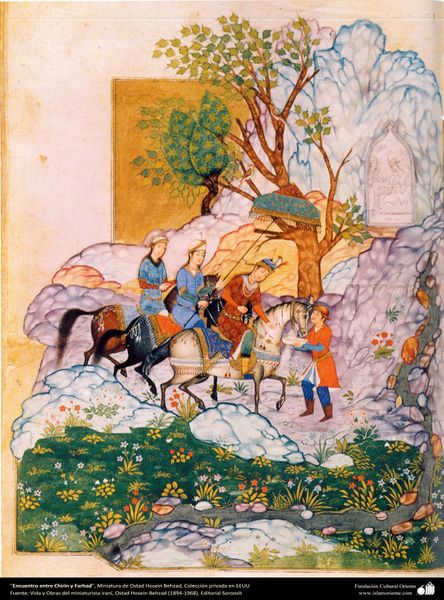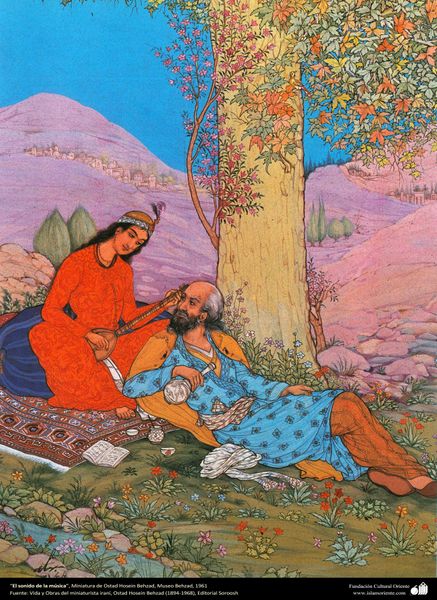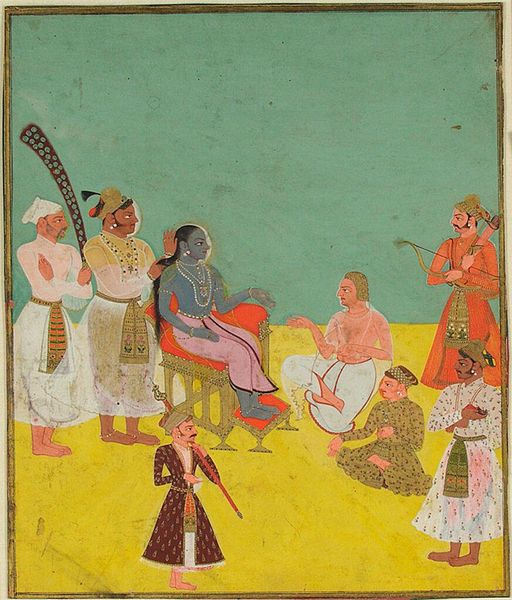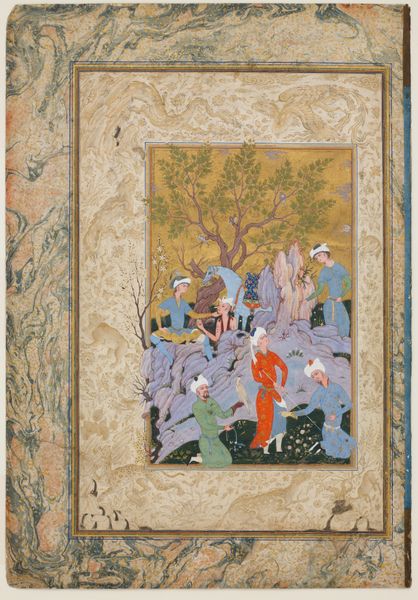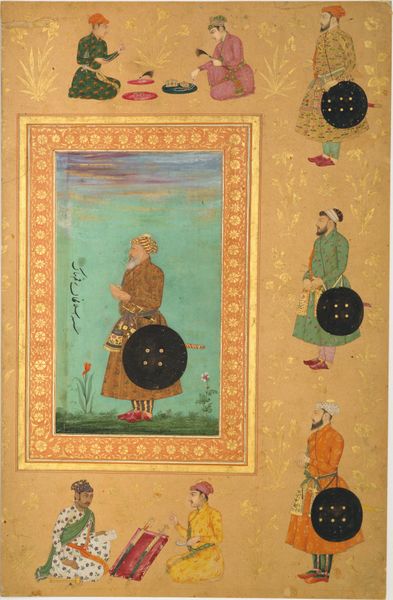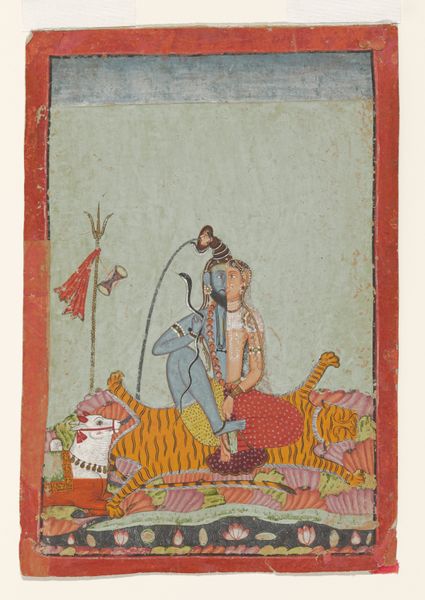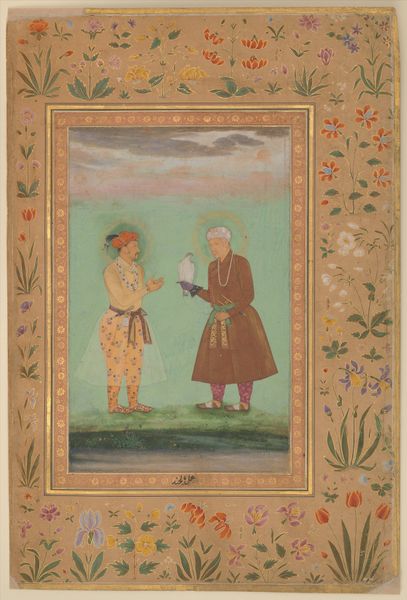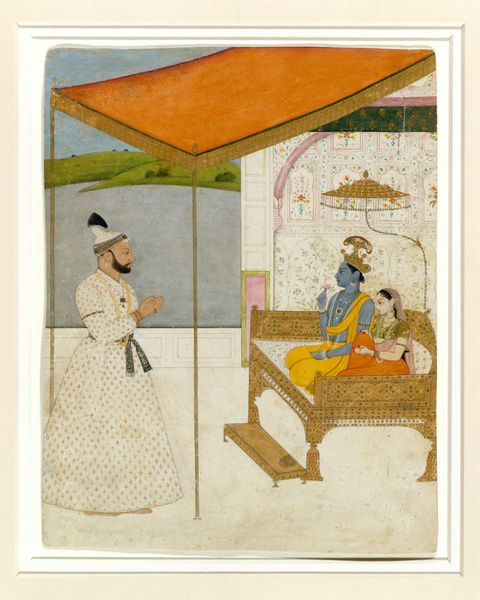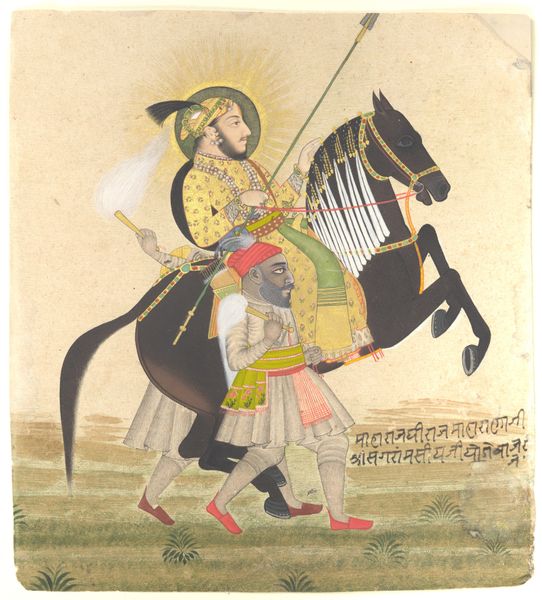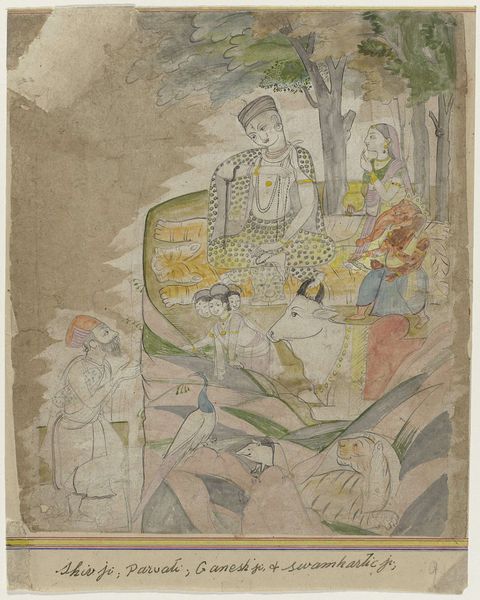
#
toned paper
#
folk art
#
handmade artwork painting
#
tile art
#
coffee painting
#
naive art
#
black tea painting
#
traditional art medium
#
watercolour illustration
#
watercolor
Copyright: Hossein Behzad,Fair Use
Curator: Immediately, what strikes me about this piece, "Shah Abbas Safavi," is its serenity. The figures, the colors, and the composition all create a tranquil scene, almost dreamlike. What's your take? Editor: Dreamlike, perhaps, but also staged. This image begs questions of power and representation. What does it mean to portray Shah Abbas in such a delicate, almost romantic light? Curator: Let's contextualize that. While the artwork's date is unknown, it’s by Hossein Behzad. He played a critical role in reviving classical Persian painting. These pieces, even when seemingly intimate, were designed for consumption within courtly circles and beyond, projecting specific ideas about leadership and the ruler’s identity. Editor: Precisely! It’s fascinating how Behzad positions Shah Abbas, not as a fearsome ruler on a battlefield, but as a refined figure amidst nature, perhaps alluding to an enlightened leadership. Look at his clothing. It’s ornate and stylized, yet he carries weapons. It seems to humanize and masculinize him. It is about presenting power in a specific guise. Curator: It’s an example of image-making designed to consolidate power, but on a deeper level, the choice of watercolors and toned paper recalls the traditions of manuscript illustration, placing him within a narrative lineage. These carefully selected materials help legitimize the Shah and his political acts. Editor: And the setting! The tree, laden with blossoms, becomes an implicit symbol of prosperity and growth, associating those qualities directly with Abbas's reign. What appears simply beautiful on the surface carries a potent political message about a reign rooted in an image of prosperity. The bow and arrow add another dimension, maybe he had just finished hunting when his company caught up to him! Curator: Agreed, and understanding that public role that these works assumed highlights the inherent performativity within royal portraiture, regardless of era. Editor: I think unpacking the nuances of such carefully constructed depictions serves to demystify power itself. Curator: Exactly! And perhaps inspiring viewers to see how visual narratives function today. Editor: Absolutely! By considering social and cultural contexts we start to peel back layers of even an image that on its face may look pleasing, or, as you mentioned, "dreamlike," like a tranquil fantasy removed from reality.
Comments
No comments
Be the first to comment and join the conversation on the ultimate creative platform.

